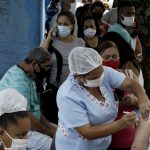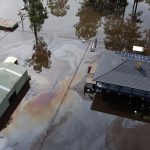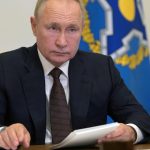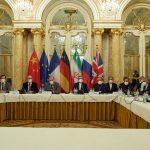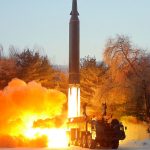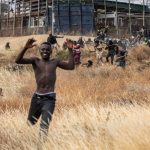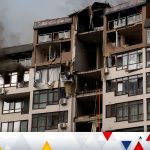The president of Sri Lanka has failed to resign despite promising to do so after thousands of people stormed his palace in protest at the economic chaos in the country.
President Gotabaya Rajapaksa and his wife fled to the Maldives on Wednesday aboard an air force jet and he made the prime minister acting president in his absence.
The appointment further angered protesters who blame him for an economic crisis that has caused severe shortages of food and fuel.
Mr Rajapaksa had repeatedly assured the speaker of parliament that he would step down by Wednesday night, but his resignation letter had not arrived by Thursday, an aide to Speaker Mahinda Yapa Abeywardena told Reuters.
It is thought the president wanted to leave the country first, by using a military jet, because Sri Lankan presidents are protected from arrest while in power.
It was expected he would head to Singapore, but his final destination is not clear. Maldives officials said Mr Rajapaksa was taking a Saudi Airlines plane to Singapore and then to Saudi Arabia, AP reported.
The authorities imposed another curfew from noon on Thursday until 5am on Friday in a bid to ward off any further protests. A state of emergency had earlier been imposed and a nationwide curfew was in place until Thursday morning.
Sri Lanka imposes state of emergency and curfew as protesters storm PM Ranil Wickremesinghe’s office
Sri Lanka’s president flees to Maldives onboard military plane after protesters storm his home
Sri Lanka crisis: Six-mile daily walk for food as demand for free meals soars and people struggle to survive
As they did so, troops were seen moving to secure Sri Lanka’s parliament building in armoured personnel carriers.
Read more:
What is happening in Sri Lanka?
One person was killed and 84 injured in clashes between riot police and protesters on Wednesday near the parliament building and the prime minister’s office.
Sky News watched as protesters stormed the gates of the prime minister’s office and occupied the grounds – the fourth government building they had taken control of since Saturday.
Please use Chrome browser for a more accessible video player
Crowds of people, undeterred by multiple rounds of tear gas, scaled the walls to enter the office of Prime Minister Ranil Wickremesinghe as those outside cheered in support and tossed water bottles to them.
Protesters took turns posing at the prime minister’s desk, taking pictures similar to those they had taken when protesters stormed the presidential palace on Saturday, or stood on a rooftop terrace waving the Sri Lankan flag.
The protesters blame Mr Rajapaksa and his powerful, dynastic family for leading the country into economic chaos, but they are also angry with Mr Wickremesinghe, who they say is protecting the president.
It is not clear whether there will be further protests. Those who occupied official buildings at the weekend and on Wednesday have said they’ll vacate the offices while parliament seeks options.
Please use Chrome browser for a more accessible video player
Earlier this week, the opposition said it was trying to form a unity government to take over but Mr Wickremesinghe has said he will not leave until a new government is in place.
It’s unclear what might happen next as the opposition is deeply fractured.
If Mr Rajapaksa resigns as planned, Sri Lankan MPs have agreed to elect a new president on 20 July to serve the remainder of Mr Rajapaksa’s term, which ends in 2024.
Whoever MPs elect president could potentially appoint a new prime minister, who would then have to be approved by the parliament.
Please use Chrome browser for a more accessible video player
There have been expressions of concern that the military – which has warned people to remain calm – might get involved if the protesters refuse to leave the buildings they have stormed, which many have vowed to do if the president does not publicly quit.


